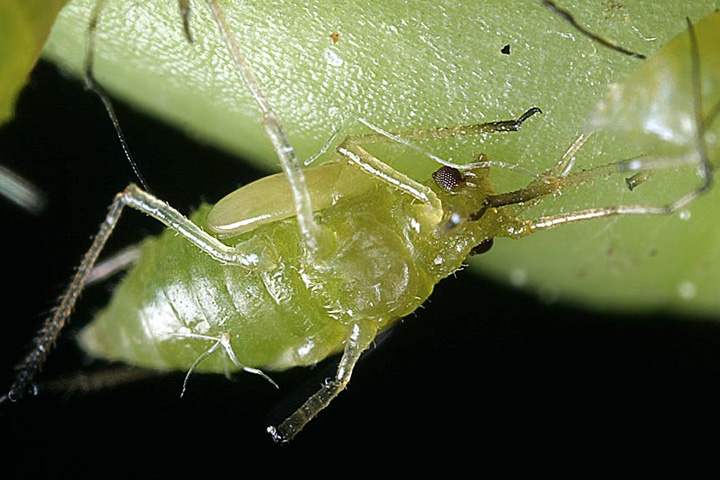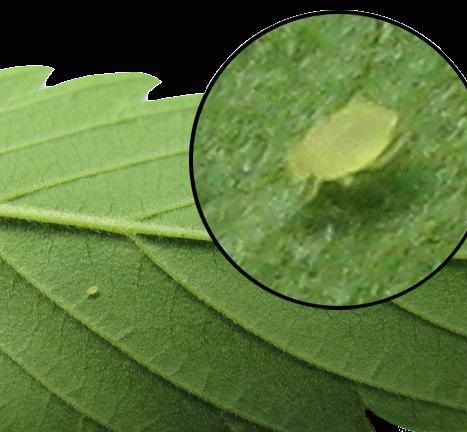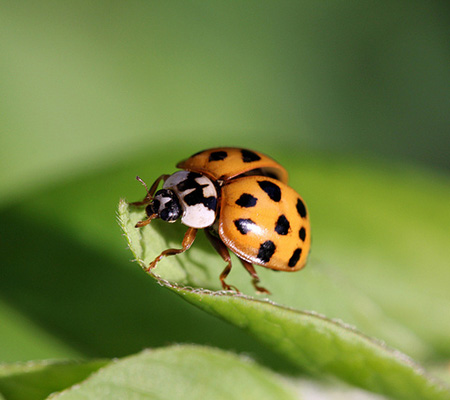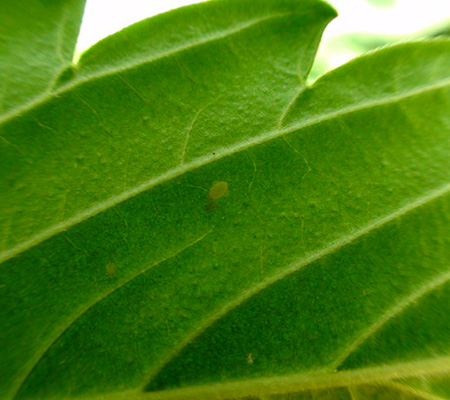
Aphids are insects that can fly and have a tendency to stay tucked away under the leaves of marijuana plants. These insects tear holes in your plant to absorb all the nutrients from the leaves till they are withering and yellow. The bugs are either yellow, black, red, green or brown. Their bodies are oval-shaped and if you look closely enough, you will notice their antennae and wings.
These insects are an issue for a few reasons, with one problem being that they transport viruses to your plants. The viruses will slow plant growth, including flowering. There are even certain aphids that will instill poisons into the plants.
Aphids survive well when the temperature is around 60 to 80 degrees Fahrenheit. Aphids leave behind a sweet substance that is known as “honeydew” when they eat your plants. Honeydew causes mold to grow, which makes the leaves turn black and could invite ants. So to sum this up, aphids can quickly pass on viruses, absorb nutrients from your plants, and bring ants that will feed on the plant.
This article covers:
Evidence of an aphid problem
How to solve this issue
Symptoms of aphids
Evidence of an aphid problem

The first sign of an aphid problem is when the honeydew left over from aphids produces a mold that amplifies on the leaves of your plants and branches. At some point, the leaves will turn black.
The best thing you can do is pay close attention to your plants by checking on them weekly. By observing the newer leaves and the buds, you will notice a fresh batch of aphids - a sign that they are building a foundation on your plant. More tips in my free grow bible.
How to solve this issue

The good news is, often times aphids get wiped out by really bad infestations. They attract wasps which will lay eggs in the aphids that create a fine, crusty shell. This shell stops them from being a problem for your plants.
Another enemy of the aphid is the ladybug. The presence of many ladybugs in your marijuana plants is a good sign that you have aphids around. Luckily they will eat aphids, which works in your favor.
You can also help out the process by making two organic sprays.
The first one is a tomato leaf spray, which can be used for both tomato plants and marijuana. Start by mixing two cups of water with two cups of chopped tomato leaves, then allow it to soak throughout the night. Next, strain the fluid in order to get rid of the leaves, then pour what’s left into a spray bottle with an additional two cups of water. Spray this solution on your plants leaves, and even more so towards the bottom of each leaf. Aphids tend to be in this area.
You can also try creating a garlic oil spray. This sprays has antifungal and antibacterial properties that get rid of toxic diseases, and it destroys many variations of pests. Chop three or four cloves of garlic and mix it with two teaspoons of mineral oil. Let this sit for 24 hours, then filter it into one gallon of water, and add one teaspoon of liquid dish soap. Keep the leftovers in jar or jug, and only use two tablespoons mixed with a full spray bottle of water.
Be sure to check to see if the garlic spray won’t harm the plants prior to using it in your whole garden. To do this just spray one leaf on a marijuana plant to test the effect. Allow it to sit for a day or two, then check to see if there is any damage.
If you see any yellowing on the leaves, then you need to dilute the solution more and try testing it on a new leaf every time. When you no longer get yellowing on the leaf, then, focusing mainly on the bottom of the leaves, spray the entire plant with the solution.
Another option for dealing with aphids is by using fatty acid salts or insecticidal soaps to upset the cell membranes of insects, which destroys them. You will need to apply it straight on the aphids, and don’t worry this will not hurt your plants.
Symptoms of aphids

- Leaves are withering
- Clusters of aphids close to the buds and new growth
- Leaves turn yellow
- Bug infestation
- Plant wilting
- Many aphids on the bottom of leaves
Because aphids reproduce live babies as often as 12 times a day, the females may create somewhere around 40 to 60 offspring that will be fully matured in just 7 – 10 days. So, as you can see it won’t take much for a massive colony of these things to be on your plants. Aphids become winged after they have fed enough and are seeking out a new place to stay, which usually means they are just going to fly to another nearby plant.
Thanks for reading. Please leave comments or questions below and don’t forget to download my free grow bible.